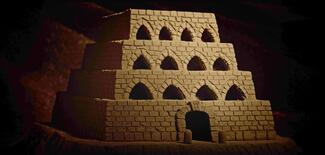
Courtesy Gayle Chong Kwan and Galerie Alberta Pane.
Politics of the Gaze Gayle Chong Kwan
Dates : Samedi 5 avril 2025 - Lundi 17 mars 2025
Vernissage : Vernissage sam 5 avr 2025, 17:00
Adresse : Galerie Alberta Pane, 44 rue de Montmorency, 75003 Paris
Galerie Alberta Pane
44 rue de Montmorency
75003 Paris
France
Description, horaires...
Alberta Pane Gallery is pleased to present Politics of the Gaze, an exhibition by Scottish artist Gayle Chong Kwan, proposed in both spaces of the Paris gallery. This exhibition features for the first time in Paris works from two recent series: A Pocket Full of Sand and Cyclops, both from 2024.
A Pocket Full of Sand is a project that explores colonial narratives through the prism of geology. It highlights the historical and contemporary connections between the Isle of Mauritius, where the artist's father hails from, and the Isle of Wight in southern England. These corpus of works are composed of an installation with photographs, sculptures, and a film. These works show buildings sculpted from sand, imitating Mauritius's colonial architecture, such as Aapravasi Ghat*; Adelaide Fort, a military structure; and Vagrant Depot, a prison for homeless workers.
In the form of grains of sand, archival images from the 40s and 50s present the points of view of two young boys who are at odds with each other: the first is in a film promoting tourism on the Isle of Wight, the second lives in Mauritius at the time of British colonization, revealing the profound contradictions of history.
Brown sand is the link between these two islands, which share similar geological features, and also refers to the color of the sugar cane in Mauritius, evoking the living conditions of the plantation workers.
The Cyclops series of works was commissioned by the Valmont Foundation (Venice). It invites us to reflect on visuality, in other words, those 'ways of seeing' the world that are historically constructed according to various factors such as our culture, our history, our religion, etc. It consists of a large photographic triptych that refers to Ulysses' encounter with Polyphemus, the giant, man-eating Cyclops, a metaphor for a limited vision and mind.
It includes references to Greek mythology, cut-out historical images, as well as images created using artificial intelligence and virtual reality. The series also features several sculptures. The most important takes the form of a mobile made up of painted and printed collages of the eyes of female artists from different periods of art history, many of whom are little-known or unknown, by choice not to 'see' them.
The other sculptures in printed fabric raise the question of non-human visuality and are inspired by the legend of the Blemnyae or ‘headless men’, imaginary figures whose faces were in the center of their torsos and whose Latin name means ‘looking from the middle’.
Although his two bodies of work come from very different contexts and fields of research, they share a common line of reasoning about the political, environmental and social consequences of the way we 'look' at the world.